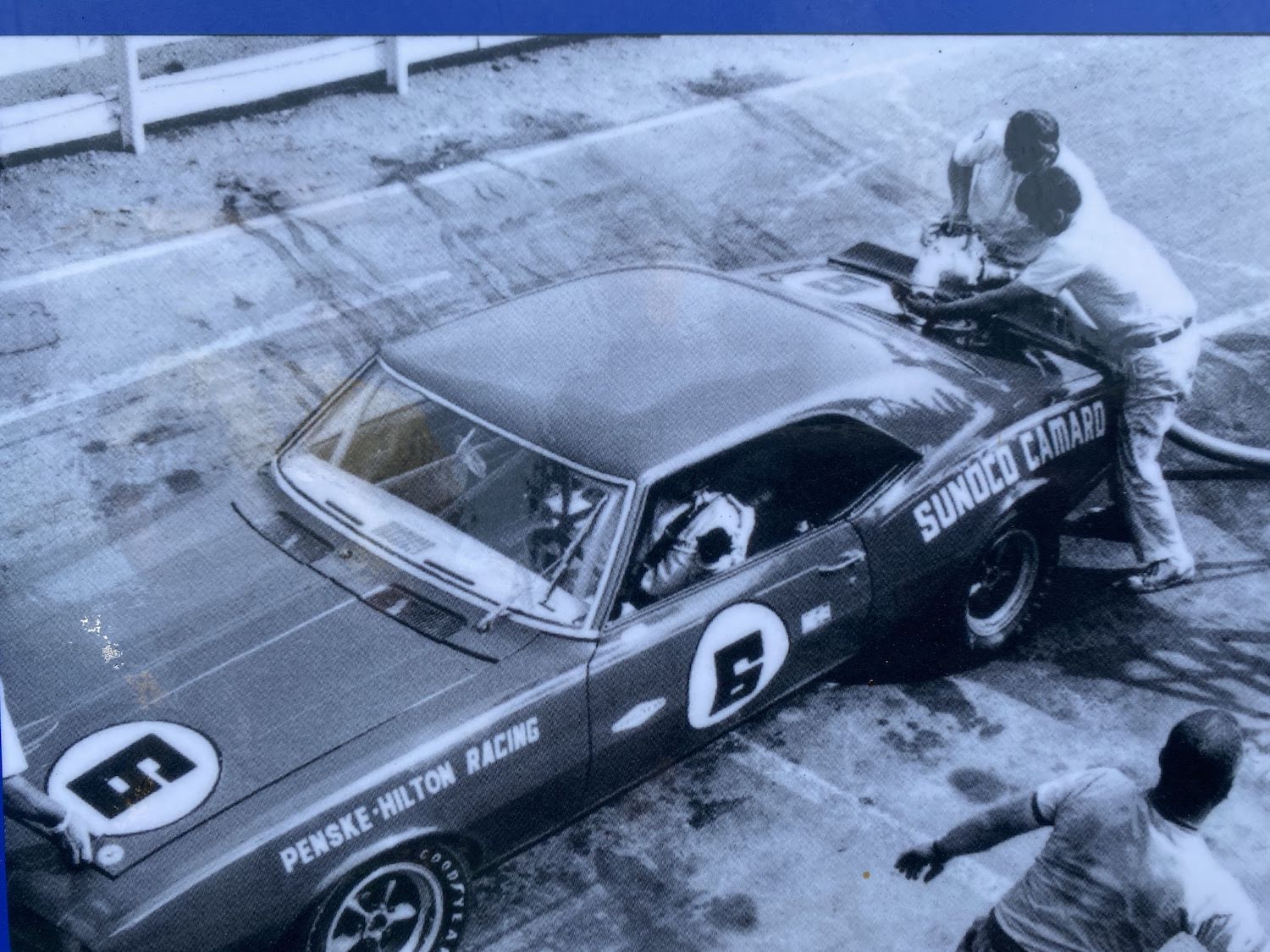Media | Articles
Nothing bends the rules quite like this Penske fueling tower
The Penske Racing Trans Am effort of the late 1960s was known for chasing down every little advantage it could find. As much as the Sunoco Camaro was racing against its fellow competitors, Team Penske was trying to beat the rule book. No detail was too small, and in a series that featured endurance races where the cars would need up to 40 gallons of fuel added during a pitstop—tenths of seconds mattered.
The hunt for quick fueling led to an analysis of the rules, which seemed surprisingly lax when it came to fueling. The main stipulation was that the bottom of the fueling rig could be no more than six feet off the ground. No restrictions on the top. That’s what we call a loophole.
So the team went about building a rig to refuel its cars. Nicknamed the “Big Rig,” this setup made its debut at the first race of the 1969 season, which happened to take place in Michigan. It was held over three days, with practice Thursday, qualifying Friday, and the race Saturday. With no pit stops needed during practice or qualifying, the team kept the Big Rig tucked inside a rented U-Haul truck until Saturday morning, when team member Jerry Kroninger erected the 20-foot tall structure.

Naturally, race officials were not pleased. By the end of the day a new rule had been added outlawing the Big Rig. Nevertheless, it still got people talking and probably became a bigger story and more memorable than a few of the cars that were competing on the track.
Marketplace
Buy and sell classics with confidence
Don Lee built an exacting replica of the Big Rig and placed it on display as part of the Penske cars on display at the 2020 Amelia Island Concours in Florida.
“It was really simply built,” Lee says about the materials and design. “These are all 20-foot sections of scaffolding, and not an inch was wasted.”
The top barrel is constructed of two 30-gallon barrels joined top to bottom, attached to an interesting setup. The second part of the stack consists of two 15-gallon barrels nestled inside another pair of 30-gallon barrels. The space between them is filled with dry ice and acetone to cool and condense the fuel. It was claimed the contraption could actually hold 23 gallons of gasoline in a 22-gallon tank by super-cooling the fuel in this manner.

The hose is massive 4-inch stock which would typically be used in industrial settings like filling tanker trucks or agricultural equipment–vintage items that are difficult to find since that’s an industry that uses things up and throws them away, rather than preserving them. “The nozzle actually took me three years to find,” Lee says, “but that is the correct one.”
It looks like it would flow fuel pretty good, but in reality it actually dumps fuel, rather than pours it. Lee had the whole setup functional for folks to experience during the concours (using water tinted with blue food dye instead of 110-octane, for safety reasons); pulling the lever on the heavy nozzle was met with nothing short of a river flowing into the tank. Closing the nozzle was met with a kick as the massive column of fuel was suddenly brought to a halt.
The whole rig breaks down into a tidy stack of scaffolding pipes and fittings. Lee admitted it is a pain to move, and he first intended to build crates to transport it, but he decided the easiest method was to pack it into a van, then ship the van. That is one custom shipping crate.
Some might look at the rig and say to themselves, “Those were the days of racing, when folks did everything they could to get around the rules.” It is important to remember that’s still the case, but those former racers and engineers are now the ones helping write the rulebook, so they know most of the tricks. Racers will always push the edge, and the Penske Big Rig is a very visible reminder of just how far teams will go, and how they’ll think creatively, to gain an advantage.

















